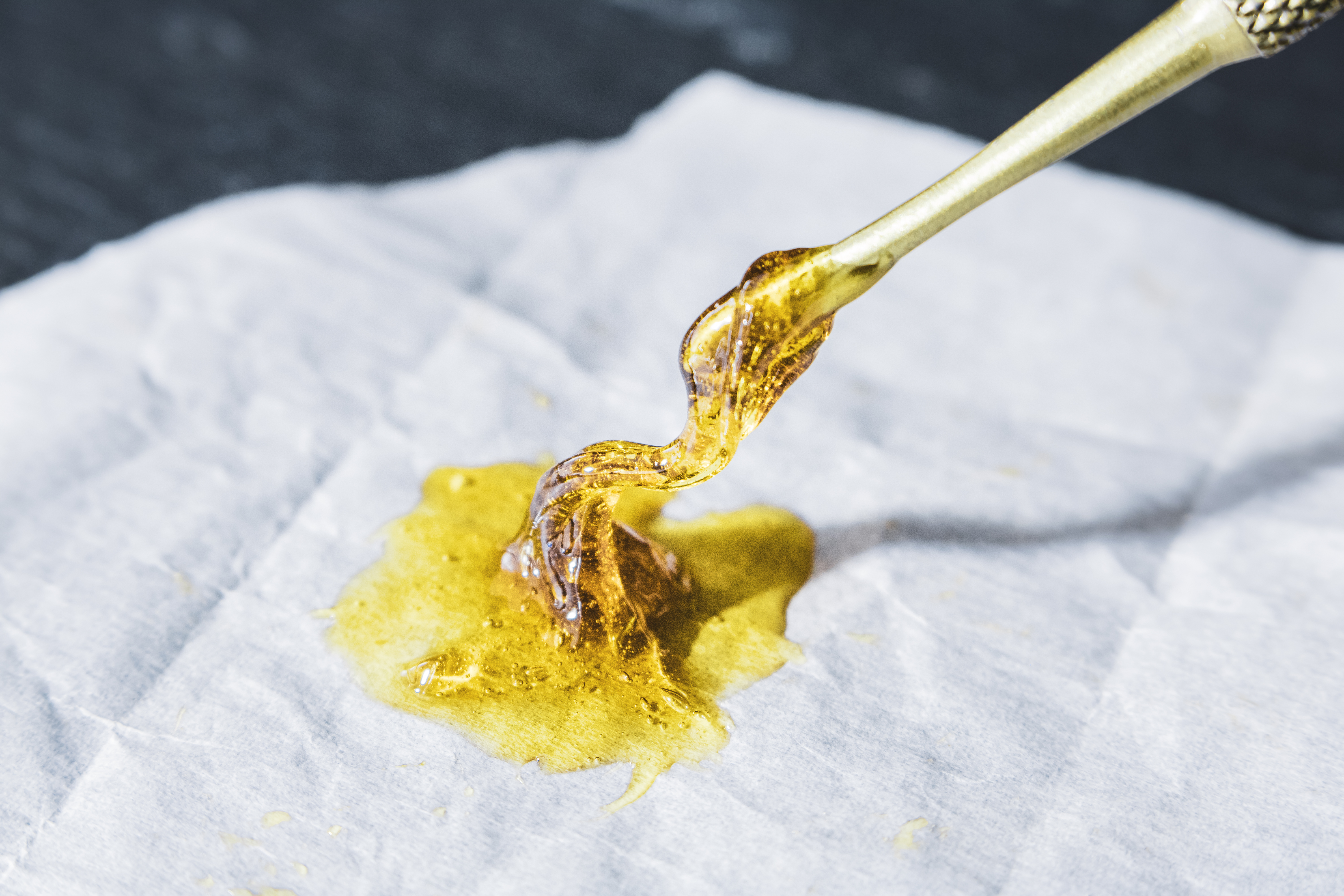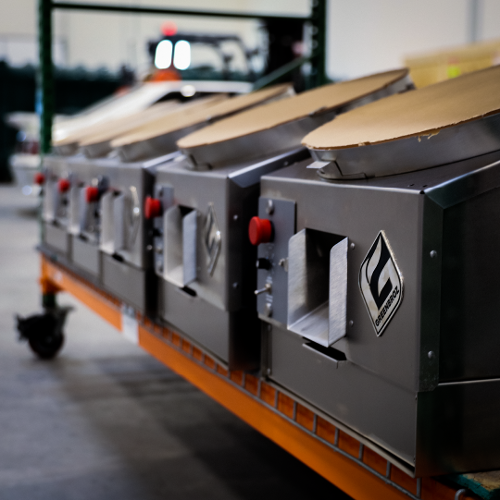Q: What's the worst thing that can happen if I wash with non-chlorinated tap water? I'm guessing they're talking about ice wash?
Eric: Yes. Talking about bubble hash, ice water hash, a very popular thing right now, between sifting and hash. Those are really where all the best rosins are being made, with those two methods. The problem with washing with tap water is that tap water typically has fluoride in it, which is good for your teeth, but maybe not good for your hash and that testing for tap water and state regulations varies enormously.
I live in the mountains here in Colorado and our tap water is as good as it is anywhere because we're so close to the source. In other parts of our country, your water might be on fire when it comes out of the tap. So, outside of the great variation and the quality of the tap water that you get, usually tap water just has to go a lot further.
While it is often safe to drink, even if it doesn't taste the very best, if you're trying to get the best hash you possibly can, having really cold, reverse osmosis water is really the only way to do it.
One other quick point that's worth making is that sometimes people will use distilled water to wash hash. Distillation as a process is great if you need to iron your clothes, but the distilled water actually concentrates pesticides, which is a little bit strange so that if there are any residual pesticides in the water that you happen to be working with, the distillation process tends to concentrate them as opposed to getting rid of them. That's why it costs good money to get a RO system going, get an RO water filter, but it's totally worth it and you really, really need that kind of water to have the best shot at making the best hash.
Q: What should I be doing with the material remaining in the bag after pressing hash?
Eric: I think the way that it's being specifically asked is about ice water hash, but it's a very similar question to sifting as well and maybe even pressing flower rosin. So I'll try and cover the whole post-press material question here because this hopefully will be helpful to other people who are interested in this topic as well.
When you're done washing, you've got all this wet cannabis in your wash liner. If you've washed it two or three times or more, typically that material is going to be spent and it's pretty much good at that point to either just drain it and toss it, or you can compost it if your local regulations allow it. Many licensed facilities do not have that luxury. It's considered waste and they have to follow certain guidelines and protocols in order to dispose of that waste.
So, after you've washed it a couple of times though, it's usually pretty spent, but where a lot of people get tripped up with sifting and with ice water hash is that they might only sift it once. They're only going to sift it once. They're only going to wash it once. You want to do that first wash or that first sift and get your primo stuff off the top just like your top kola is going to have some of your best trichomes no matter if you're just selling nugs or if you're making extracts.
But then you want to wash it again and then another time and you want to sift it again and then another time because you're going to come out with a higher yield and a higher range of products. So your first pass might be your dab-able high-end, that's your best, but then your second and your third wash, your second and your third sift, that can be more of your food-grade or some of the leftover material that you can use for topicals and edibles. Long story short, once it's spent do what you can with it. It's an organic material, just like any other, but make sure you're actually getting your full yield before throwing it away.
Q: How cold should my freezer be for storing fresh flower?
Eric: As we all know, real peer-reviewed information on cannabis is becoming more common, but it's still a relatively rare thing. I mean, you look at the kind of peer-reviewed studies you have in the workout industry, it's unlimited. And then in cannabis, it's light, but there is a peer-reviewed study that we feel pretty good about on exactly this topic. Feel free to reach out and contact us and we'll share it out to whoever is interested.
In the study, they took dried cannabis and they froze it under different temperatures and different conditions to see which was going to produce the best cannabinoid and terpene retention based on different freezing temperatures. Up until pretty recently, it's just been a trial and error sort of science. The short answer is, if you're freezing your flower at any more than below negative 20 degrees, that does not help you. A lot of businesses out there are investing enormous amounts of money in these ultra-deep freezers. It doesn't help retain more than cannabinoids.
As long as you're nice and frozen somewhere between negative 20 and probably 15 degrees, you're going to be okay. That's where they found that over the course of time, the best cannabinoid retention was found. I don't have the exact range off the top of my head, but we'd be happy to share that study. You don't need to invest in some ultra freezer. You just need to make sure that when you're freezing it, it's in a nice airtight container and moisture tight as much as you can, because there's actually a lot of moistures in freezers and moisture and cannabis don't always play well.
Q: I suspect trichomes detach better when plant medium is super dry upon harvest. What do you think about that?
Eric: That's possible, I think that there's a lot of microbiology happening, not only at the trichome level but at the plant level itself. And there are many strong opinions out there in the growing community about, "The plant needs to be in darkness for 24 to 48 hours before you harvest it because that concentrates potency." Or, "The plants should be very dry before you cut it down because that helps the cure and the drying process."
My expertise is not growing. So I will freely admit kind of where the limit of my knowledge is on this topic. I think it's possible, but where we have the most information comes from talking with hash makers and understanding because the trichome detachability is equally important for sift as it is for ice water hash has a lot to do with the size and shape of the trichome heads. I think more so than whether or not your plant is a little crispy when you cut it down. Because if you've got a big trichome head sitting on a stock, it's a lot easier to knock that off. Whereas some trichomes, they almost look like a finger. It's a little spike, or you have ones that have really, really small heads and, thick stocks.
There are so many different shapes and variations that trichomes come in. So some of the super, super winning strains that sift and wash really well, they have really, really large trichome heads and kind of thinner stocks. But again, some strains just behave differently. Some strains just sift differently, the trichomes detach differently and we don't really know why in some cases, other than the shape of the trichome head. But I'm sure we'll know a lot more soon.
Q: Per denser buds. Would you use a shredder before putting the plant material into the rosin press?
Eric: We were just talking about how bud structure makes a huge difference if you're pressing rosin, whether it's flower, sifting, or whatever. The short answer is no. When you grind up your flower before it goes into a bag or before you sift it or before you wash it, what you're really doing is damaging and destroying a lot of the trichome heads. So if you're washing a particularly dense strain or sifting a particularly dense drain, you either need to sift it more quickly or sift it for longer or put a little bit more force on the bud. You want it to break up a little bit in the vessel that you're actually doing your first stage extraction in.
For example, if you're using a GreenBroz
Alchemist 420, and you just loaded all your buds in there, and you know that they're pretty dense, you could try putting an agitator in there. There are ways that you can add some weight that are not going to create damage the machine, but if you do it in a grinder first, all of the trichomes that have been broken off now they're in your grinder and they're not in your sift or they're not in your wash bag or they're not in your flower bag. They're somewhere else and that's reducing your yield.
So, we don't really ever recommend anyone free grind anything. That's just going to reduce your yield and give you a lower quality product. If you just have a bud that's too dense and it's just not working super well on sift you just might have to find something else to do with it. Just be honest with yourself and the material that you have. You can't force certain buds and certain strains to yield great with solventless, at least not yet.
Q: What is Rosin sauce and how is it made?
Eric: I don't know their process. I haven't been in their lab to see them and they wouldn't share it with us anyway, because again, these are the secrets that make hash companies what they are. But from a general level of how rosin sauce is being made, pretty much all hash makers are doing it relatively similar in that there's a terpene separation process. So you have a lot of really nice quality sift or really nice quality hash quality being the number one way to get the terpene separation going. If you have a lower quality product, it just simply doesn't work very well. And you're pressing that material in a fine micron bag at a low temperature for a long time.
What that tends to do is separate out the terpenes. And then they're recombining that in a gram jar with separated THCA, the crystals to have a similar product. It's all about separating your different components and then recombining them in such a way to get a shelf-stable product. It definitely takes some time, some work. There's some info out there about it, but the people who are doing it the very best, they're not going to tell you their temperatures. They're not going to tell you their times. It took them a long time and a lot of wasted material to figure that out.
Q: Some of the best brands out there are producing product with your machines, and they'll do tens of thousands of dollars in pressing by just touching a button and walking away. Right?
Eric: Literally. So the extraction process is getting to a point where the automation with our equipment is so high end, that people are entrusting enormous amounts of product with our presses, but doing it very efficiently and not having to man the press every second of the day, like some of the more manual options out there demand you to do. So at the end of the day, it really comes down to having a consistent product as a company. That's why if you buy a latte at Starbucks in Seattle it's the same as you buy it in New York.
Really, in any consumer product, consistency is the name of the game, no matter what it is. I think a lot of the really savvy cannabis companies have obviously realized that. So the control that you get with our equipment far surpasses anyone else out there. And what that enables you to have is an extremely consistent product at the other end, so that when somebody comes and buys hash rosin, sift rosin from you and your brand, they're expecting that quality. And it's a lot easier to maintain a consistent quality with the control our machines offer.
Q: What's the smallest amount of pressure I can apply on a Helix press?
Eric: There's a pretty big range because if you're pressing a really nice sift or really nice hash, I mean, you could be at under two or 300 pounds (of force) at the bag and get a great extraction. Now, if you're pressing flower, you might be up closer to 800, 1,000 or more pounds actual force application at the bag to get a proper extraction. So if you're pressing flower, you need to press harder. If you're pressing sift or ice water hash, you don't need to press with as much force.
Also, the higher quality that you have of your material, the less force you need to get a proper extraction. Quality is a huge, huge factor here as well as age. So if you're pressing older flower, or older hash, or older sift, it oxidizes, hardens things up, there are less cannabinoids, you need more heat to extract it as well.
You have all these different factors of age, temperature, time, pressure, that play horse, but long story short, if it's high quality, you can get away with very little pressure on a Helix. It does the calculations for you for those pound courses. If you're pressing flower, you might need to go a little higher than that, 800 plus.



